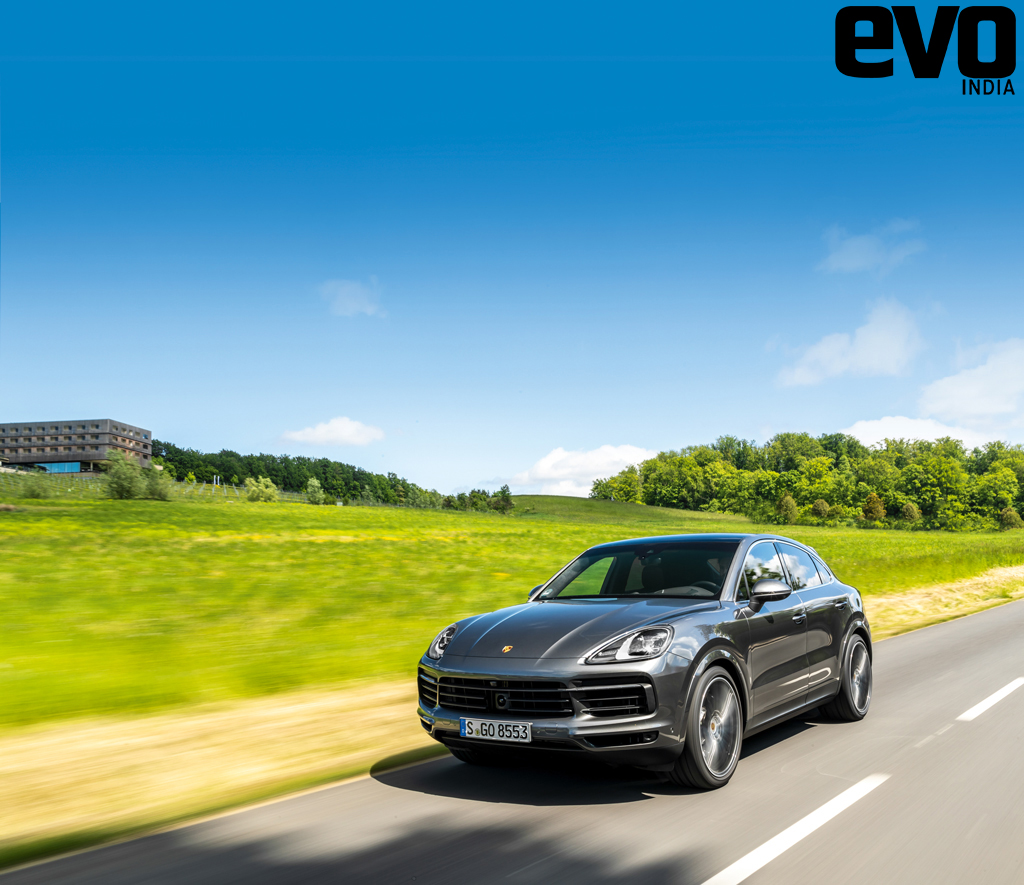Driven: Porsche Cayenne Turbo Coupe
Porsche’s Cayenne joins the coupe SUV party, but what – if anything – does it mean for the driving experience?

There are two ways of looking at the Porsche Cayenne Coupe. The first is as a big, dumb lump of ostentation, ammunition for the kind of people who would ban cars altogether if they could, and as an object of dubious style over substance bought not for any semblance of practicality like a regular Cayenne might be, but purely for whatever image you think it projects about yourself.
The other is, like all Cayennes that have come before it, as Porsche’s cash cow, but one without cynicism, engineered to the same exacting standards and dynamic sensibilities as any other car from Stuttgart, even if it’s conceptually as far from a Boxster or 911 as it’s possible to get.
And after an hour or so behind the wheel, your thoughts drift inexorably from the first school of thought to the second. It’s still large, brash and deeply vulgar, but if circumstances or desire lead you to buy an SUV, few are better suited to those who actually enjoy driving than one made by Porsche.

What’s new in the Cayenne Turbo Coupe?
The current third-generation Cayenne and its Coupe counterpart were designed around the same time, so while Porsche may be later to the party than most with its swoopy SUV, it does have unique characteristics beyond just a sloping, fastback-like (we refuse to say coupe-like) roofline. The rear doors and wings are 18mm wider than the regular Cayenne’s, while the A-pillars and windscreen are more swept back, and the roofline 20mm lower. We’d stop short of calling it athletic-looking, but parked alongside a standard Cayenne the regular car does lose a lot of its impact. The Coupe does, unavoidably, look like others we’ve seen recently – there are strong hints of Mercedes’ GLC and GLE Coupes about the hind quarters – but despite the roof chop, it maintains a sizeable boot and, thanks to rear seats mounted 30mm lower, good rear headroom.
The rest of the cabin is largely identical to the regular Cayenne’s, though the rear bench isn’t really a bench but two separate seats, unless you specify otherwise. A panoramic glass roof is standard, but the most compelling changes come when you specify the Lightweight Sports Package. The glass roof is then replaced by a 22kg-lighter carbonfibre panel (with an Alcantara headlining inside), some sound deadening material is removed, 22-inch forged alloy wheels are added, and the seats are decked in a grippy houndstooth cloth like that of classic Porsches – or the more recent 911 R.
Along with Alcantara for the steering wheel, the change in ambience is surprisingly transformative, and there’s definitely a touch more road and wind noise. Other stand-out options include rear-axle steering, Porsche Dynamic Chassis Control, and carbon-ceramics.
And, of course, just choosing the Coupe itself attracts a premium. You can pick one of three variants – the basic Cayenne Coupe, with a 335bhp three-litre turbo V6 producing 450Nm of torque; the S Coupe with its 434bhp, 550Nm, 2.9-litre twin-turbo V6 (essentially the engine used in Audi’s RS4); and the Turbo Coupe, powered by a 542bhp, 770Nm twin-turbo V8. Porsche quotes 0-100kmph times of 6.0, 5.0 and 3.9sec respectively, and top speeds of 241, 262 and 285kmph.

How does the Porsche Cayenne Turbo Coupe drive?
On-road performance follows the figures. The basic Coupe is brisk and the Turbo thunderingly quick, with an exhaust bark that wouldn’t be out of place at La Sarthe. The S sits somewhere between the two, its soundtrack rowdier than the base car’s but its performance not quite as blistering as the Turbo’s. For some it might be the sweet spot, but it’s hard to imagine Cayenne Coupe customers missing out on the full Turbo experience.
For anyone who doesn’t go the whole hog, the chassis feels largely identical (both between each model, and to the regular Cayenne’s), despite the Turbo riding on adaptive air suspension rather than on just regular adaptive dampers. Sport Chrono is standard across the range, so you’ve got a spread of driving modes from Normal to Sport+. We’d leave it in Sport+, to benefit from the lively throttle response and slightly tighter steering. Knocking the gear selector across to choose your own gears from the eight-speed auto feels natural too – and changes are swift, if not as snappy as a PDK’s.
Where some performance SUVs feel like they bludgeon their way down a road, the Cayenne Coupe is more adjustable and fluid. The steering – precise, perfectly weighted, predictable in response – remains a highlight, backed up by Porsche’s torque vectoring and rear-wheel-steering systems.
They give the Cayenne Coupe the kind of agility that cars such as this simply shouldn’t be capable of, and a counter-intuitive but wonderfully naughty sensation that turning harder and using more throttle actually seems to tighten your cornering line rather than forcing the nose to run wide. With the Turbo clocking in at 2200kg it’s not infallible, but it’s damn close. On this evidence, Porsche’s record for creating driver’s SUVs remains unblemished by the new Cayenne Coupe.


